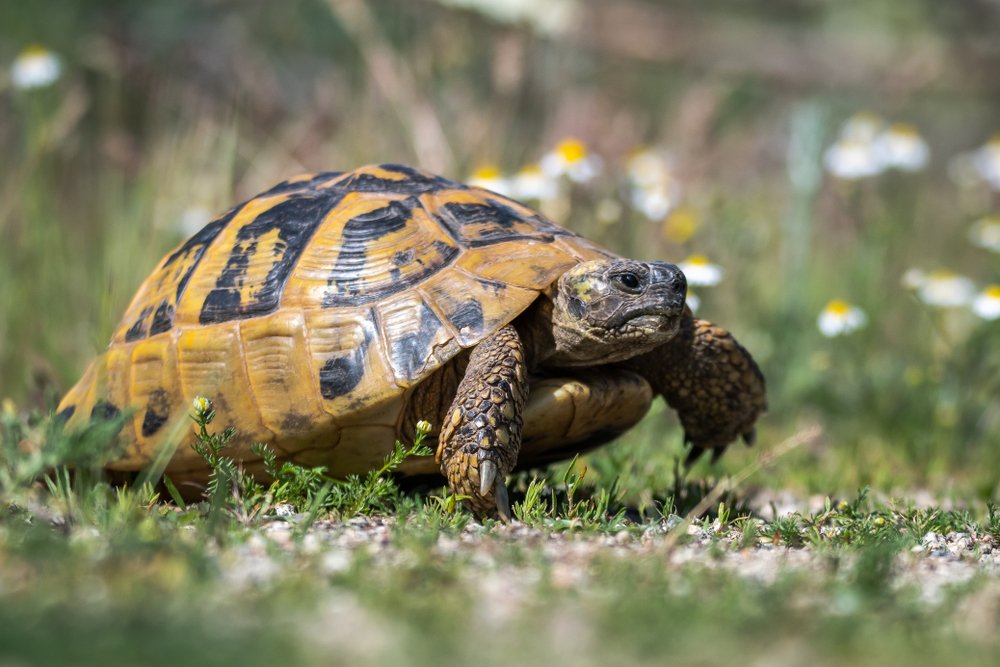Hermann’s and Horsfield tortoises are the most popular pet Chelonians in the UK. Both are Mediterranean tortoise species. It’s easy to see why they are so popular. These reptiles are extremely hardy and thrive outdoors in British gardens (an unusual trait for exotic pets). However, their stoic nature means that as husbandry advances, keepers may fall into the trap of caring for their tortoise “how they always have” and miss crucially important care updates. The following “do’s” and “don’ts” are a checklist to improving care. If you see anything in here that you might be doing wrong check out our “advances in care” and “hermmans tortoise care guide” for more info…

Mediterranean Tortoise: Do’s
DO feed your Mediterranean tortoise a natural diet comprising mostly weeds and flowers.
DO provide calcium carbonate to tortoises, plus, ideally, Nutrobal vitamin supplement, especially for babies, breeding females and the elderly.
DO give your Mediterranean tortoise access to a dry light shelter during cold or wet weather and allow access to outdoors, natural sunlight or UVB combo heat lamps
DO allow females access to nesting mounds and keep aggressive males and female separate to avoid stress to animals.
DO create an interesting indoor and outdoor environment with lots of space for a tortoise to exercise and explore. (Review and extend setup as tortoise grows).
DO make sure your tortoise enclosures are secure and photo ID your tortoise.
DO give your tortoise access to bathing and drinking water (15-20 minutes bath in warm water and should be able to put its head under the water to drink.
DO make sure a tortoise visits a vet at least once per year for a general health check and worming (Please ask for recommended vets.)
DO check your tortoise thoroughly for signs of damage injury or disease once a week and weigh your tortoise in grams at least once a month. Keep a record of date and weight.
DO hibernate all healthy Mediterranean tortoises for a short time and check regularly. 12-14 weeks for adults/6 – 8 weeks babies/very elderly.(note: shorter for some species). Sick or underweight tortoises should be kept awake throughout winter. (If unsure always consult a vet when you go for a pre-hibernation check-up)

Mediterranean Tortoise: Don’ts
DON’T over feed your Mediterranean tortoise. One meal a day or access to natural grazing is enough.
DON’T feed your tortoise with cat or dog food. High protein diets are lethal to tortoises.
DON’T feed only tomatoes cucumber and lettuce, sugary fruits or vegetables, especially from cabbage or bean family IT’S JUNK FOOD!
DON’T leave your Mediterranean tortoise in a damp cold environment.
DON’T keep your Mediterranean tortoise permanently indoors. Allow access to outdoors during periods of warm weather to benefit from natural UV sunshine in secure garden.
DON’T leave your tortoise and pet dog unattended.
DON’T allow your tortoise free access to a garden pond
DON’T let your tortoise get too cold or hot in hibernation, 4c to 8c is perfect. Regularly check temp and condition. (See hibernation care sheet)
DON’T use hay or straw as a bedding material.
DON’T oil, polish or drill your tortoises shell
For further information, including free care sheets, please visit www.tortoiseclub.org
